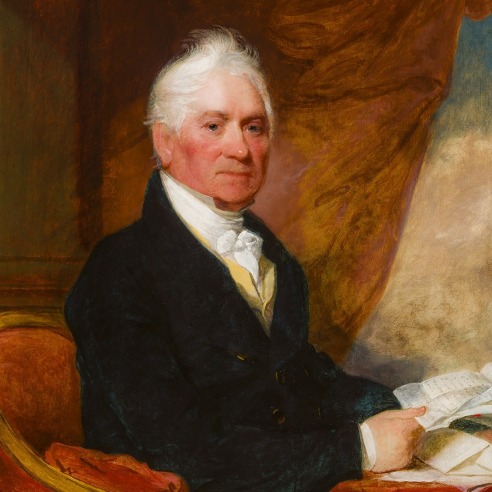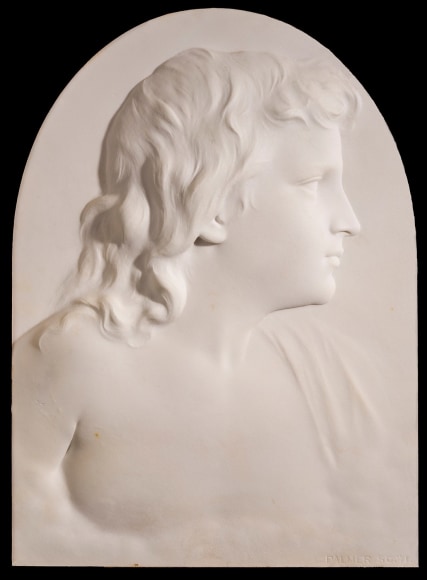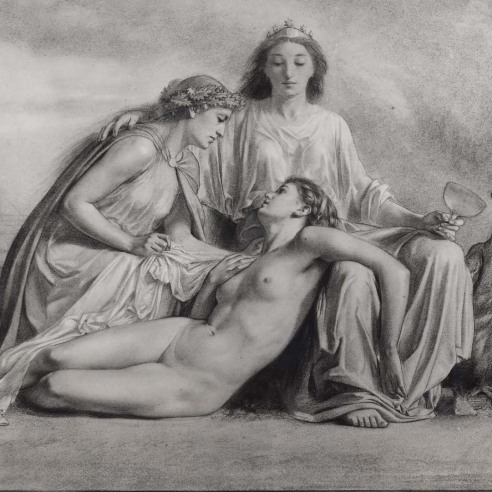
ERASTUS DOW PALMER (1817–1904)
Portrait of Walter Launt Palmer (at Age Seventeen), 1871
Marble relief, arched top, 19 x 13 1/2 in.
Signed, dated, and inscribed (at lower right): PALMER. SC. ‘71
EX COLL: [Robinson Galleries, Harrison, New York, until 2004]; to private collection, 2004; to sale, Carlsen Gallery, Freehold, New York, September 18, 2005, no. 563; to private collection, 2005 until the present
Palmer’s portrait-relief of his son, the young artist Walter Launt Palmer (1854–1932), was executed in 1871, about a year after Walter began his art studies with Frederic Edwin Church, who wrote of his young protégé: “Wallie is the coming man so far as I can see and I would like to be of use to him before he gets so far advanced as not to require my aid” (Frederic Church to Erastus Dow Palmer, July 1871, Erastus Dow Palmer Papers, McKinney Library, Albany Institute of History & Art). Housed in its original arched-top wood frame, the relief shows Walter facing to the right with one shoulder bare, the other covered with a piece of classical drapery. Palmer’s careful modeling effectively captures his offspring’s pleasing profile and refined features while giving us a sense of his youthfulness and promise. (Walter grew up to be as handsome as his father, favoring a fashionable moustache instead of an old-fashioned beard.) The portrait also reveals Palmer’s characteristic handling of hair, which he conceived as soft, flowing locks rather than conventionalized grooves.
Notable for its exquisite handling of line and simplified yet rhythmic composition, Portrait of Walter Launt Palmer (at Age Seventeen) serves as a reminder that Palmer is considered one of the finest exponents of bas-relief sculpture of his generation.



